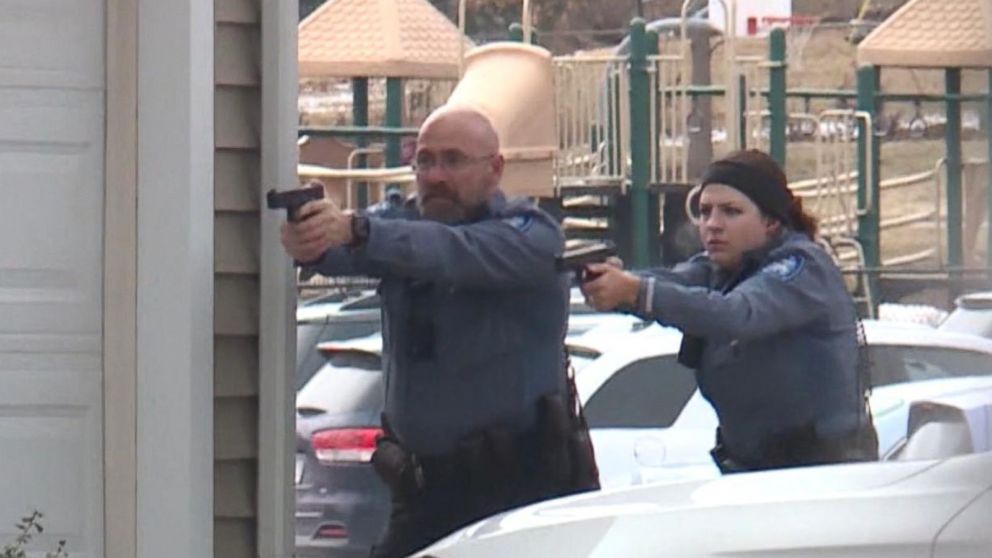Motor-skill coordination has long been misinterpreted to have universal effects on human performance. (As an aside, the only images that come up originally in a Google search are child-related, something that wasn’t lost on me regarding why this is still a huge topic of such importance in the SD world) Heart-rates, performance capability, general physiological-response lists at exertion-levels that transfer to every single person equally, breakdowns of specific performance under duress for complex/fine/gross motor-skill accessibility. Grossman and Siddle really left a glowing myth to overcome for rest of us. The gift that keeps on giving.
A close affiliate of a very well-known SD figure stated something on social media the other day that I witnessed. This person stated that “If anything requires fine motor skills, it’s simply not achievable under the effects of adrenaline and, therefore, it’s utterly useless and nobody facing antisocial violence will ever be able to access it. The most important elements in SD is the delivery system, which is never physical but psychological, emotional, mental, and behavioral…” Understandably, lots liked the comment because it sounds great as a soundbite and who would question such a respected authority, right? (I did but took it down after a while as a) few care, b) I don’t get paid to argue with strangers – on Facebook – who make grand sweeping statements, and c) tons of what we see on social media is bullshit and who wants to be a little Dutch girl putting their finger in the hole of the dam, I have a life to lead) But it’s wrong. At best, contextual, circumstantial, and personal.

So you know, it is always person-specific so “nobody ever” and “never” are rather generalized, as are “always” and “everybody always.” People rise to the occasion quite regularly…even using “fine- and complex-motor skill” under survival-duress. No, it may not be ideal or highest-percentage for everybody and every situation – granted – but to universally state “it’s crap” in all antisocial scenarios would be to discard Youtube videos, case-studies….and modern science. Deploying, opening, and re-loading weapons, medical management, firing, opening doors, multi-tasking, split-attention function, making complex decisions…are all achievable for some – even under life-threatening stress and antisocial violence. Physiology/nature, experience(s), breathing, exposure, prior awareness all are intangibles that dictate. Hell, that day’s sleep, food-intake, fear-level/anxiety as well. It’s exactly because of that delivery system (psychological/emotional/behavioral) being the thing, that it is so person-specific. This person inevitably defeated their own argument.
Now, to further this counter-point, let’s remember as well that not all antisocial violence happens the same way. That’s a fact that most SD experts neglect to discuss in their rush to inform you of their variations of “social” and “antisocial” paradigms and scenario-specific strategy-breakdowns. Muggings are different than pickpocket-catches are different from snatch-and-run theft. Kidnappings are different than home invasions. Even home invasions here in CR have different motivations, goals, and levels-of-violence that the perpetrators are willing to invest. (warnings, items of value, a hit, violence for violence sake) Interviews for change from aggressive panhandlers are probing and testing. Ambush attacks are yet another dynamic. As are sicario-hits. What is “antisocial violence” and no fine-motor skills are achievable ever? There’s a vast array of sliding-scale “antisocial” violence and all have their own context of intent, motivation, strategy, and innocuousness. Slow-burn, immediate and explosive, prolonged. The problem is that far too many SD experts generalize all situations with universal strategies. Or transfer their prior violence experience to a vast chasm of customer need and lifestyle. Regardless, it’s easy to be one-dimensional, generic, and cookie-cutter, making big sweeping statements that sound great to the loyal followers they maintain.
To get back to the original premise, each individual person (all this above factored in) has their own environment, capability, behavior, mission, beliefs/values, nature/nurture, experience/experiences, states that affect their ability to manage stress/violence/anxiety/pressure at any given time. Law enforcement in firefights achieve amazing things under duress…including fine- and complex-motor skills. Regular civilians with innate survival-skillsets as well under attack or great levels of surprise violence. Professionals in life-saving environments as well….firefighters, pilots, military personnel, medical personnel for instance.

As well, these tools that the industry incessantly passes around – universal heart-rate charts (like the one above), performance-capability numbers, motor-skill correlations to stressful environments….have long ago been proven inaccurate by science. They are only perpetuated by industry professionals who’ve made their name, client-base, and reputation off of this outdated and useless information. Science, medicine, human performance, and the invention of social media to show glaring real-life examples have all put a lot of this hyperbole to rest….yet here we are. Still selling the legend.
All this combines to make a very specific, contextual, and individual stress-response…..hardly semantic, which is what most of these people lean on when cornered. “Well, what I MEANT was…”nobody BUT experienced people”” or “”wasn’t adrenal-FRIENDLY” but doesn’t mean some people can’t surpass these “restrictions”” or “I should’ve said “higher- vs. lower-percentage options” (a good one, by the way) or….you get the point. Sure, they can always go that route, indeed that’s why it’s so easy to spew these colloquialisms, because they are so easy to change meaning to midstream. And those, my friends, are the most dangerous of all. One-size-fits-all generalizations on a topic that is staunchly-contextual and multi-dimensional – violence. When you hear words like “always”, “never”, “nobody ever”, “if/then” conditional statements…..really, really do an internal validity check. A quote I’m familiar with fits here nicely, “always look to refute, not confirm. Attempting to confirm a suspicion shows bias. If you’re unable to refute the suspicion with all reasonable possibilities, then you’re left with the appropriate conclusion.” Rarely is anything concrete in the counter-violence/violence world and that has been proven time-and-again by average everyday people shattering those universal quantifiers. (I even saw a guy once on video do a wristlock against a real, live gun-wielding criminal and that’s never ever supposed to hap….)








